Today I welcome fellow 17th century enthusiast, Elizabeth St. John, author of The Lady of the Tower. In her debut historical novel, Elizabeth tells the story of Lucy St. John, a woman who carves out her own path through the early Stuart decadent court.
Most intriguingly, there is a close connection between the author and heroine. In this interview, Elizabeth shares with us the nature of this connection and her passion for uncovering the past.
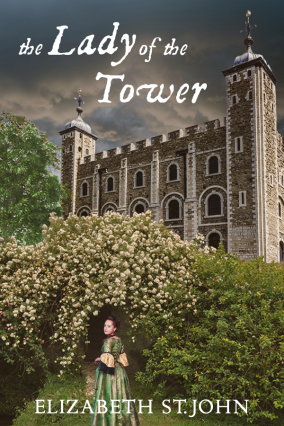
What drew you to the 17th Century in the first place?
Having grown up in England surrounded by history, I think of it as one long continuum rather than specific periods, especially since so much of my experience is in the context of my family. We trace our ancestors back directly to Alfred the Great, and have documented each generation in detail from the 11th century. Our family was quite successful during the 15th and 16th centuries (my maternal g-grandmother was Margaret Beauchamp, grandmother to Henry VII), but it was in the 17th century that so many of them rose to power. Then, when I discovered the relationship between Lucy St.John and Lucy Hutchinson, I set off to discover more!
Tell us about your connection to the heroine of The Lady of the Tower.
The St.John family have two branches, the senior (Bletsoe) and the junior (Lydiard) branch, which came into being with the division of property and titles from Margaret Beauchamp. I’m a descendent of the Lords of Bletsoe, and Lucy, my heroine in The Lady of the Tower, is from the Lydiard branch. I guess you could call us cousins – we shared a grandmother way back when.
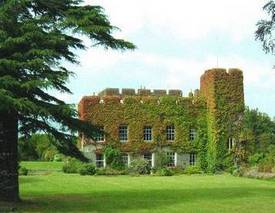
Did you have any family documents or stories that you were able to draw from to write The Lady of the Tower?
Absolutely! In fact, it was in discovering Lucy Hutchinson’s Memoirs of the Life of Colonel Hutchinson in Nottingham Castle many years ago that revealed Lucy St.John’s story. It is just a fragment in the Memoirs, but enough to fire my imagination. I remember reading the Memoirs and getting a shiver of excitement as I realized the story that was emerging. Lydiard Park, Lucy’s ancestral home in Wiltshire, has always been a place I’ve loved to visit, and the portraits there of Lucy’s brother John and her sister Barbara are quite lovely. And, of course, the polyptych in the Church of St. Mary’s with its unique portrait of all six sisters is any writer’s dream!
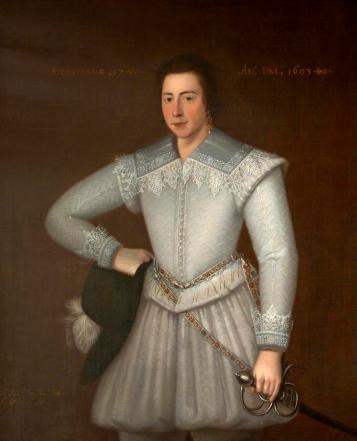

I was also able to include many medicinal recipes within the book (Lucy was documented as a herbalist who treated the prisoners of Tower with her curatives) that come from Lady Johanna St.John’s Recipe Book, which is part of the Wellcome Foundation collection in London. Lady Johanna was Lucy’s niece by marriage, and since so many recipes were handed down and exchanged, I felt it was no stretch of the imagination to think some may have been Lucy’s.
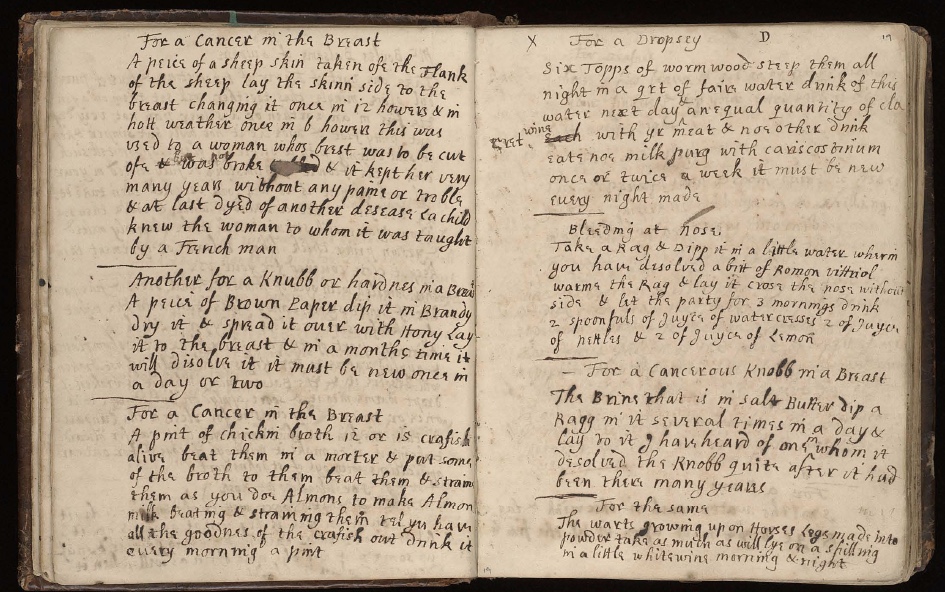
How did you approach your research?
Very carefully. More than anything, I only wanted to use primary resources to tell my story, so it was a long and complicated journey to embark on. I visited the National Archives, combed scholarly sources on line and spent countless hours transcribing wills, court documents, letters and other written evidence. Every so often, there would be such an exciting find – a letter that mentioned Will’s pirating escapade, or a family tree that depicted Barbara’s children marrying Theo’s, that I’d jump for joy and rush to share the news with my bewildered family. Most poignant was one of the first original documents I found in the British Library – Sir Allen’s will, which forms the pivot for the story. Touching his signature, I felt such an emotional connection to Lucy and all that she was to him, and how much he loved her.
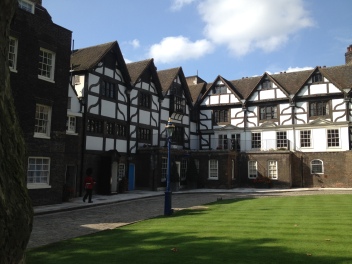
What were some of the challenges to writing about one of your relatives? Did it influence your approach to the story, and if so, how?
The biggest challenge was wanting to create an entertaining book that people would read, while remaining true to the facts and respecting that these are people’s lives I am talking about, even though they are long dead. It took me a while to get started; to begin with I felt presumptuous writing in first person POV – but I found as the research supported my interpretation of their character and behaviour, I was able to write more freely. Soon, they took over quite happily, and I felt I was writing a faithful account of their lives.
Tell us about your next project.
I’ve just returned from a trip to the UK where I’ve been visiting the battlefields of the Civil War. My next project is a follow up to The Lady of the Tower – Lucy’s children fought on opposite sides of the Civil War, and there are some remarkable stories of their lives. I’m underway with the first draft now.
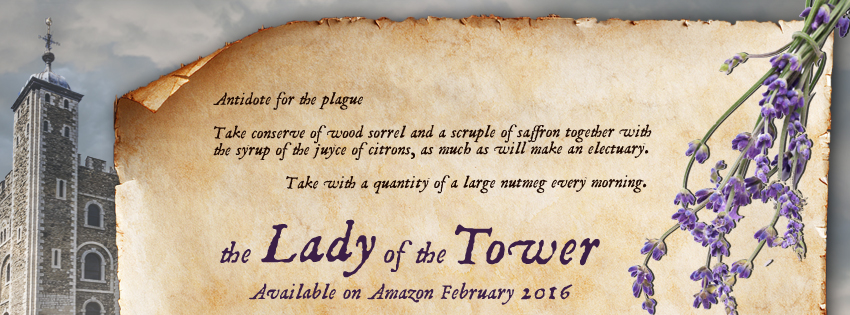
About The Lady of the Tower
A True Account of 17th Century Intrigue and Betrayal in the Tower of London
In the fascinating story of Lucy St.John, a young woman caught up in the drama, intrigues and machinations of 17th court life, her descendent, Elizabeth St.John, has skillfully woven together letters and memorabilia to produce a compelling work of historical fiction.
Orphaned Lucy St.John, described as “the most beautiful of all,” defies English society by carving her own path through the decadent Stuart court. She catches the eye of the Earl of Suffolk, but her envious sister Barbara is determined to ruin her happiness. Exiling herself from the court, Lucy has to find her own path through life, becoming mistress of the Tower of London. Riding the coattails of the king’s favorite, the Duke of Buckingham, the fortunes of the St.Johns rise to dizzying heights. But with great wealth comes betrayal, leaving Lucy to fight for her survival—and her honor—in a world of deceit and debauchery.
In The Lady of the Tower Ms St.John tells this dramatic story of love, betrayal, family bonds and loyalty through the eyes of her ancestor Lucy and her family’s surviving diaries, letters and court papers.
It’s an historically responsible account, very interesting in its arrangement, the skill behind Lucy’s language and idiom, and the remarkable plot, which deals with Lucy’s life from the accession of King James to the throne of England in 1603 to her departure from the Tower of London in May of 1630.
Professor Paul Sellin, UCLA
Treasure, Treason and the Tower
On sale now at Amazon and The Tower of London
About the Author:
 Elizabeth St.John was brought up in England and lives in California. She has tracked down family papers and sites from Nottingham Castle, Lydiard Park, and the British Library to Castle Fonmon and The Tower of London
Elizabeth St.John was brought up in England and lives in California. She has tracked down family papers and sites from Nottingham Castle, Lydiard Park, and the British Library to Castle Fonmon and The Tower of London
Although the family sold a few castles and country homes along the way (it’s hard to keep a good castle going these days), Lucy and her family still occupy them – in the form of portraits, memoirs, and gardens that carry their imprint.
Follower her on Facebook and check out her Website.
Attributions:
- Lady Johanna St. John’s Recipe Book. The Library at Wellcome Collection, London. Ref: Saint John, Johanna. MS. 4338
There is a picture of Fonmon Castle in the story, but it isn’t mentioned. Did Lucy live there? And how did she interact with Lucy Hutchinson? So much is hinted at so I suspect this interview was longer … ??? I loved the article and want to read the book — you left me wanting more.
LikeLiked by 1 person
Hi Sarah. Glad that you want more information. Fonmon Castle was the home of Will St. John (Lucy’s cousin and brother-in-law). I intended to add that in the interview but I missed it in the end. I’ll ask Elizabeth to respond to your question about Lucy Hutchinson. I believe she is the subject of her next book.
LikeLike
Hi Sarah – thanks for your questions. Lucy St.John was Lucy Hutchinson’s mother, and she was staying at Fonmon Castle when she met Allen Apsley, Lucy Hutchinson’s father. I believe that Sir William St.John (who married Eleanor St.John, Lucy’s sister and LH’s aunt) was leasing Fonmon Castle at the time from his St.John cousin owners.
Here are two excerpts from LH’s “Life” (her preface to Memoirs of the Life of Colonel Hutchinson) which was the basis for my writing of this encounter:
Firstly, she talks about her father (Sir Allen)
His friends, considering his solitude, had procured him a match of a very rich widow, who was a lady of as much discretion as wealth; but while he was upon this design he chanced to see my mother, at the house of Sir William St. John, who had married her eldest sister; and though he went on his journey, yet something in her person and behaviour he carried along with him, which would not let him accomplish it, but brought him back to my mother. She was of a noble family, being the youngest daughter of Sir John St. John, of Lidiard Tregooze in the county of Wilts;
And then this is the perspective as LH talks about her mother:
she was herself not well treated by my uncle, whereupon she left his house, with a resolution to withdraw herself into the island, where the good minister was, and there to wear out her life in the service of God. While she was deliberating, and had fixed upon it in her own thoughts, resolving to impart it to none, she was with Sir William St. John, who had married my aunt, when my father accidentally came in there, and fell so heartily in love with her, that he persuaded her to marry him, which she did, and her melancholy made her conform cheerfully to that gravity of habit and conversation, which was becoming the wife of such a person,
I think it was love (spoiler alert!), don’t you?
LikeLiked by 1 person
Very romantic!
LikeLike
Thank you, Elizabeth and Cryssa … there is never enough information … and yes, Lucy and Allen sound as if it was mutual love at first sight. How wonderful … but Lucy’s later good words shows she would probably have made a good nun as well. Next question, you said there were six sisters, but only named four:
The Six Sisters: Lucy St.John Apsley – Barbara St.John Villiers (married Sir Edward Villiers, George’s half-brother) – Eleanor St.John – Katherine St.John – do we not know the other two names? I’m going to have to dig to find out who Eleanor and Katherine married.
Elizabeth, you are so lucky having all these wonderful characters in your background. Do you speak in California at all? I live in San Diego and would travel to hear you!
LikeLiked by 1 person
Ah the sisters. Again, according to Lucy Hutchinson, “there were not in those days so many beautiful women found in any family as these, but my mother was by the most judgments preferred before all her elder sisters, who, something envious at it, used her unkindly.”
You’re right. In ascending age order (and from left to right on the portrait)
Lucy = Sir Allen Apsley (spoiler alert – I shall say no more!)
Barbara = Sir Edward Villiers (half brother of the delicious George)
Eleanor = Sir William St.John of Highlight, Glamorgan (a pirate and friend of Raleigh)
Jane = (1) Sir Robert Atye; (2) Sir Charles Pleydell (local Wiltshire gentry)
Anne = Sir George Ayliffe (parents-in-law of Edward Hyde, Lord Chancellor)
Katherine = Sir Giles Mompesson (a complete scoundrel!)
If you’d like to contact me through my website http://www.elizabethjstjohn.com, I can let you know upcoming events. I am in California too.
LikeLiked by 1 person
A fascinating who’s who! So that would make Anne Ayliffe the great grandmother of Queen Mary and Queen Anne.
LikeLike
Not quite…Anne Ayliffe (Anne and George’s daughter) was Edward Hyde’s first wife. Sadly, she died of smallpox six month after they were married. The royal descent comes from his second wife, Frances. HOWEVER, the royal connection between the families does exist as a friendship – Frances Apsley (she of the famous “love letters” between Anne and herself) was maid of honour to Anne, and was Lucy St.John and Allen Apsley’s granddaughter.
LikeLiked by 1 person
So fascinating!
LikeLike
[…] have nothing written down by her. There appears to be no historical novel of Lucy (there is one on the earlier Elizabeth St John): sometimes this genre when well done can add to our knowledge through imaginative use of […]
LikeLike
Elizabeth is currently writing her second novel and I hope she’ll bring us Lucy Hutchinson. She certainly adds to our knowledge of the time.
LikeLike
[…] a politically charged royal court. There is an earlier interview her on the blog about this book (click here) which I would encourage you to […]
LikeLike
[…] review can be found here and an interview with Elizabeth St John about her novel here. The Lady of the Tower is the first in Elizabeth St John’s series, The Lydiard […]
LikeLiked by 1 person